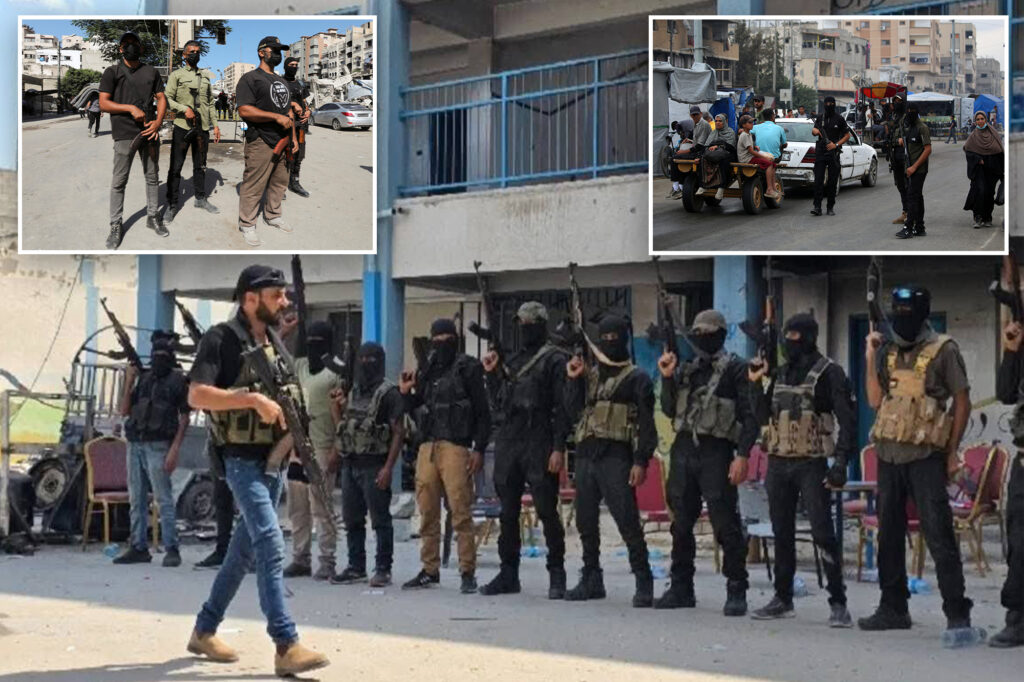
As the ceasefire in Gaza takes hold following over two years of conflict, Hamas finds itself contending with significant internal strife. Four major armed clans are vying for influence in the war-ravaged enclave, posing a direct challenge to Hamas’s authority. After a peace deal with Israel was reached on October 7, Hamas deployed thousands of fighters in an attempt to reassert its control, but it faces growing opposition from these rival factions.
Hamas claims it has dispatched 7,000 fighters to restore order, targeting what it describes as “outlaws and collaborators.” Yet, the armed groups, including the Popular Forces, the Doghmosh clan, the Al-Majayda clan, and the Hellis, have already engaged in violent clashes, leading to numerous casualties. Among the most notable incidents was the death of Saleh al-Jafarawi, a prominent Palestinian influencer, during a recent shootout, highlighting the escalating tensions within the region.
Key Players in Gaza’s Armed Conflict
A figure of particular note is Yasser Abu Shabab, the leader of the Popular Forces militia. Based in southern Gaza, Shabab has reportedly recruited hundreds of fighters by offering lucrative salaries, with estimates suggesting his militia comprises around 400 men. Allegations have surfaced regarding Israeli support for his group, particularly as reports indicated that anti-Hamas militias received weaponry from Israel. Shabab has denied these claims, asserting they are unfounded propaganda from Hamas. Despite controversies surrounding him, including accusations of looting humanitarian aid, Shabab has positioned himself as a potential leader capable of steering Gaza towards a new future.
The Doghmosh clan remains one of the most formidable armed groups in Gaza. Led by Mumtaz Doghmosh, the clan has a history of violent confrontations with Hamas. Doghmosh has previously aligned himself with extremist groups, including the Islamic State. Recent clashes in Gaza City resulted in the deaths of at least 27 people, as Hamas attempted to suppress Doghmosh’s forces. Residents reported intense fighting in the Tel al-Hawa neighborhood, underscoring the clan’s resilience against Hamas.
Meanwhile, the Al-Majayda clan, under the leadership of Hussam al-Astal, has also emerged as a key player. Operating out of Khan Younis, the clan has engaged in violent confrontations with Hamas, particularly during a raid earlier this month that resulted in significant casualties. Al-Astal has been accused of receiving Israeli support, a claim he refutes. He has positioned himself as a protector of the Palestinian populace, asserting that his group will work to dismantle Hamas’s control.
Another significant faction is the Hellis clan, which operates in the Shejaia suburb of Gaza City. Led by Rami Hellis, this group has historically opposed Hamas since the latter took control of the Gaza Strip in 2007. The Hellis clan has been politically aligned with the Fatah Party, which currently governs the West Bank. It remains unclear whether this clan has received support from Israel, but their continued resistance against Hamas adds to the complexity of the power dynamics in Gaza.
The Broader Implications of Internal Conflict
The current power struggle in Gaza has significant implications for the region’s stability. With Hamas attempting to reassert its authority, the emergence of these rival clans complicates an already volatile situation. The ongoing violence not only threatens the ceasefire but also raises concerns about the humanitarian crisis in Gaza, where many civilians are caught in the crossfire.
As Hamas faces increasing pressure from these armed groups, it has resorted to extreme measures, including public executions, to maintain control and eliminate perceived threats. The situation remains fluid, with the potential for further clashes as rival factions continue to vie for power.
The internal conflict in Gaza exemplifies the challenges faced by Hamas as it seeks to navigate a landscape rife with competing interests and external influences. The coming weeks will be critical in determining whether Hamas can stabilize its rule or whether the clans will gain further traction in their bid for control.






